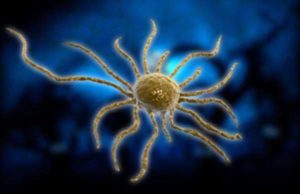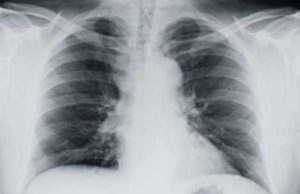
What is Photodynamic Therapy?
Photodynamic therapy is applied to treat a number of medical conditions, including malignant cancers such as mesothelioma. Photodynamic therapy is a revered treatment option for its minimally toxic and minimally invasive methods.
Although the potential and applicability of photodynamic therapy has been known for centuries, the development of modern applications has been gradual, involving a number of advancements in the fields of cancer biology and photobiology, as well as the development of modern photonic instruments, such as LEDs and lasers.
The bulk of modern Photodynamic therapy applications utilize three core components: a light source, tissue oxygen and a photosensitizer. The combination of these components yields a chemical destruction of any tissues which are either selected by the photosensitizer or have been locally exposed to the light. To achieve the selective destruction of the targeted cells or tissue using Photodynamic therapy while leaving surrounding/healthy tissues unharmed, either the photosensitive targets must be locally excited with the attached light or the photosensitizer must be applied locally to the target area.
Advantages and Limitations of Photodynamic Therapy:
Photodynamic therapy is regarded as both minimally toxic and minimally invasive. These advantages make Photodynamic therapy an attractive alternative to more intrusive cancer or mesothelioma treatment methods. When compared to radio surgical operations, chemotherapy and radiotherapy, for the treatment of cancerous diseases, Photodynamic therapy is also significantly cheaper. Moreover, post-operative recovery for Photodynamic therapy patients is typically just a few hours.
Dissimilar to chemotherapy treatment options for cancer, the effect of Photodynamic therapy is localized. This specificity of treatment is achieved in the following ways:
• Light is first delivered solely to the tissues that a medical professional wishes to treat. With the absence of light, activation of the photosensitizer is not possible. When this occurs, cancerous cells cannot be targeted nor killed.
• Secondly, photosensitizers can be administered in ways that impede or limit cancerous cells mobility.
• And lastly, photosensitizers may be employed to selectively absorb—at a rapid rate—cancerous cells.
To successfully utilize Photodynamic therapy, light must be present to activate the photosensitizers. This factor is crucial and previously limited the development of Photodynamic therapy—traditional wavelengths of light had difficulty penetrating tissue.
Photodynamic Therapy as a Mesothelioma Treatment Option:
Photodynamic therapy uses laser lights to terminate cancerous cells. The Food and Drug Administration currently approves the use of these lasers to combat non-small cell lung cancers and cancer of the esophagus. That being said, Photodynamic therapy is currently in the experimental stages as a possible mesothelioma treatment option.
Although Photodynamic therapy is currently not used in the United States to combat mesothelioma cancer, the groundbreaking technology is employed overseas to treat mesothelioma patients. Abroad, Photodynamic therapy involves doctors injecting mesothelioma patients with Photofrin, a drug that targets and bonds to mesothelioma cancer cells. This special drug lies dormant until Photodynamic therapy lasers or LEDs are shined on it. When light interacts with this drug it becomes active and terminates tumor/cancer cells. To activate the drug, Medical professionals will insert a fiber optic cable into the patient’s chest cavity. The cable is attached with a high-resolution light that triggers the drug’s location. When the light hits the drug, it immediately activates and goes to work.
When the light interacts with the drug it creates a special oxygen bond that eats away at the cancerous cells. Aim and timing are crucial in Photodynamic therapy; the medical professional performing the procedure must position the light only on the cancerous cells that are bound with the drug. Problem is, the drug also may bond with healthy cells, complicating the doctor’s job in pinpointing the cancerous cells.
The primary drawback to Photodynamic therapy for mesothelioma patients is that the laser light is not particularly strong; typically the light can only penetrate three centimeters. Because of this limited strength, Photodynamic therapy is most effective against tumors that are close to the skin or on the surface of internal organs. Photodynamic therapy also only utilizes mesothelioma drugs that are susceptible to being absorbed by healthy cells, as well as cancerous ones.
As stated above, Photodynamic therapy for more generic cancers yield routine or limited side effects. However, in terms of fighting mesothelioma, Photodynamic therapy presents slightly more significant side effects, including an increase in the body’s sensitivity to light and severe nausea.





























